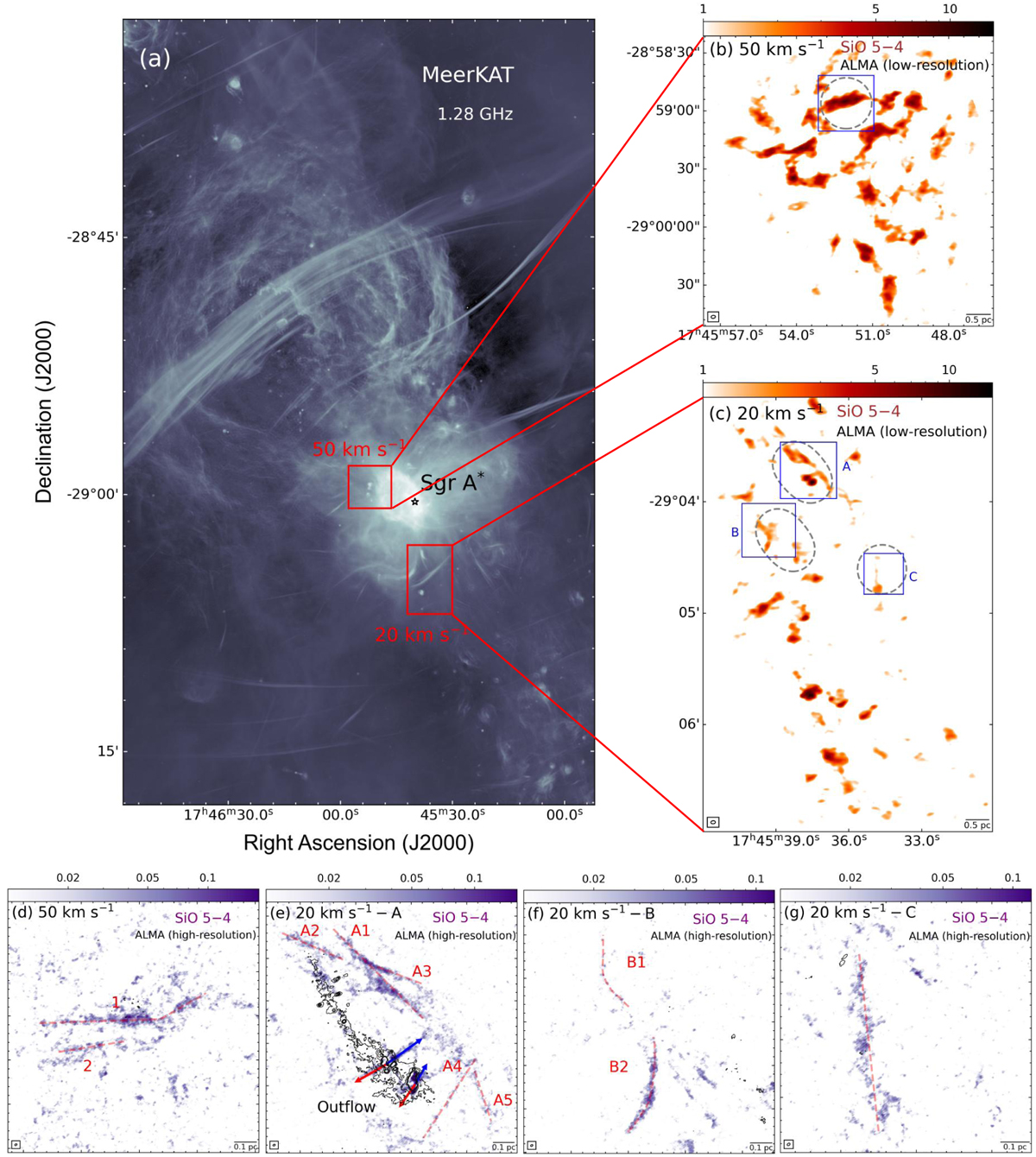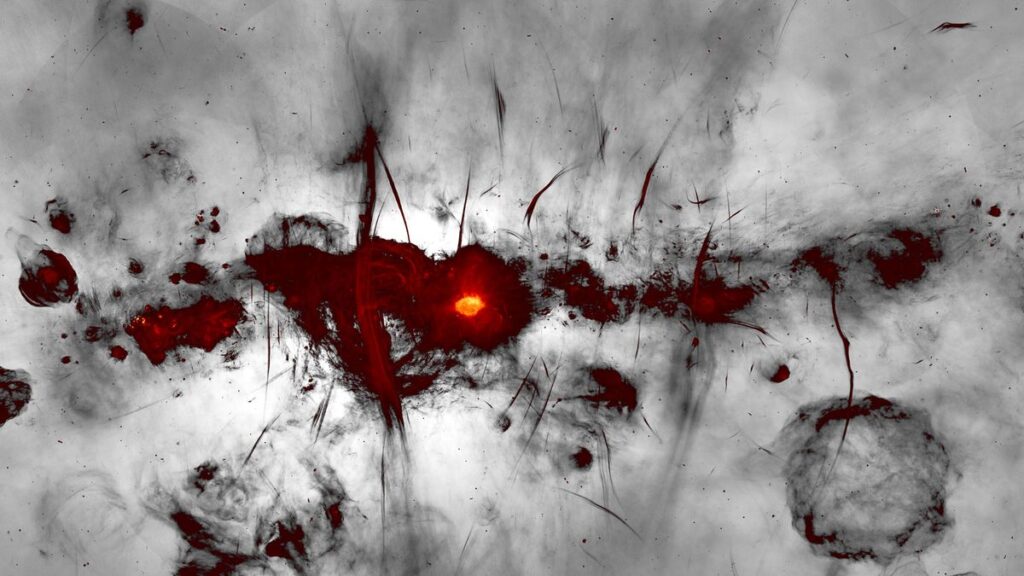“Space tornadoes” are swirling near the supermassive black hole at the heart of our Milky Way galaxy, new telescope observations have revealed in unprecedented detail.
Astronomers recently zoomed in on the cosmic twisters using the Atacama Large Millimeter/submillimeter Array (ALMA) in Chile. Although these rotating structures had been seen previously, the new observations with ALMA are 100 times sharper than the earlier views, the team reported in a new paper published in the journal Astronomy & Astrophysics.
The researchers began by pointing ALMA at a region of the galaxy known as the central molecular zone (CMZ), which surrounds our galaxy’s core supermassive black hole and is filled with seething clouds of dust and gas. The team wanted to uncover the mechanism driving the relentless motion of these clouds.
Related: High-school student accidentally discovers black hole ‘light echo’ twice as wide as the Milky Way
They used ALMA to trace certain molecular compounds — such as silicon monoxide, which is particularly good at revealing shock waves — within the maelstrom. This allowed the team to detect previously unseen details in the cosmic dust storms — including a new type of long, slender filament that seems to form when shock waves ripple past.
“Unlike any objects we know, these filaments really surprised us,” because they appear to move quickly and in a direction counter to the structures surrounding them, Kai Yang, an astronomer at Shanghai Jiao Tong University and lead author of the study, said in a statement.

The researchers describe these filaments as space tornadoes. “They are violent streams of gas, they dissipate quickly, and they distribute materials into the environment efficiently,” the authors said in the statement. The team’s observations suggest that, in addition to emitting silicon oxide, these whirlwinds might disperse complex organic molecules — such as methanol, methyl cyanide and cyanoacetylene — throughout the CMZ and beyond.
“ALMA’s high angular resolution and extraordinary sensitivity were essential to detect these molecular line emission associated with the slim filaments, and to confirm that there is no associations between these structures with dust emissions,” Yichen Zhang, an astrophysicist at Shanghai Jiao Tong University and a co-author of the paper, said in a statement.
Further observations with ALMA will help the researchers determine how widespread these slim filaments are within the CMZ and how they contribute to molecular cycling in the region.
